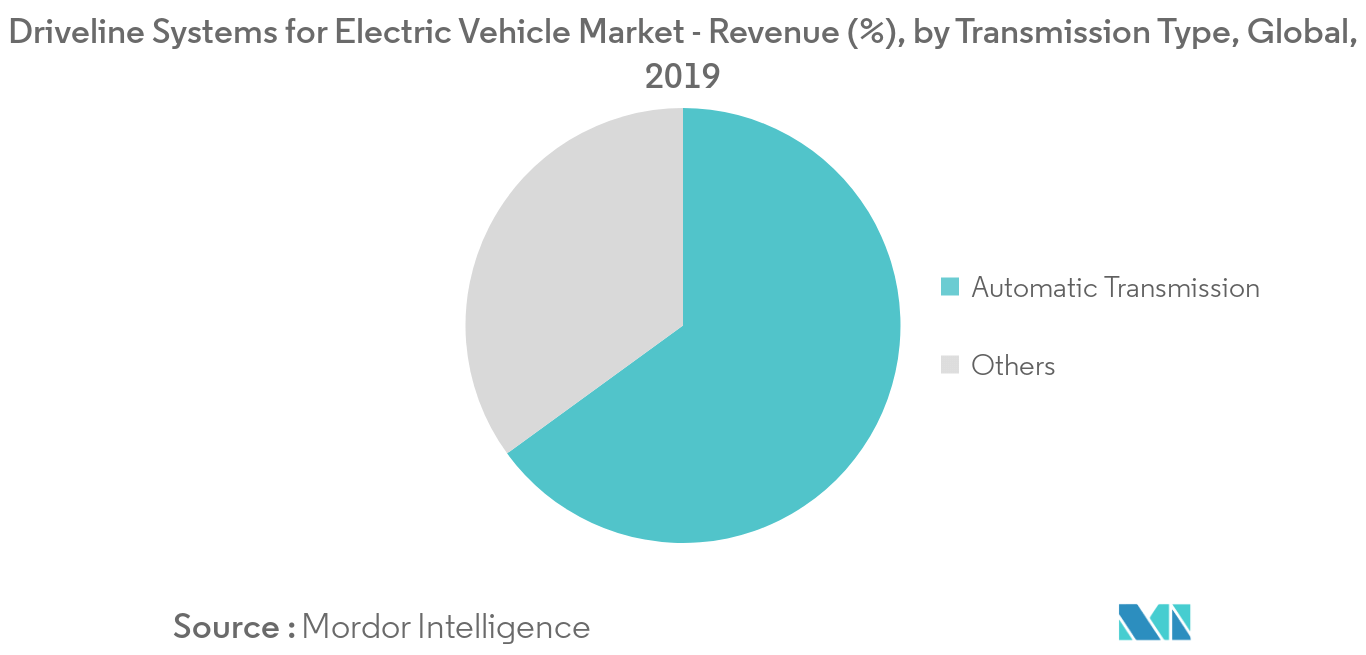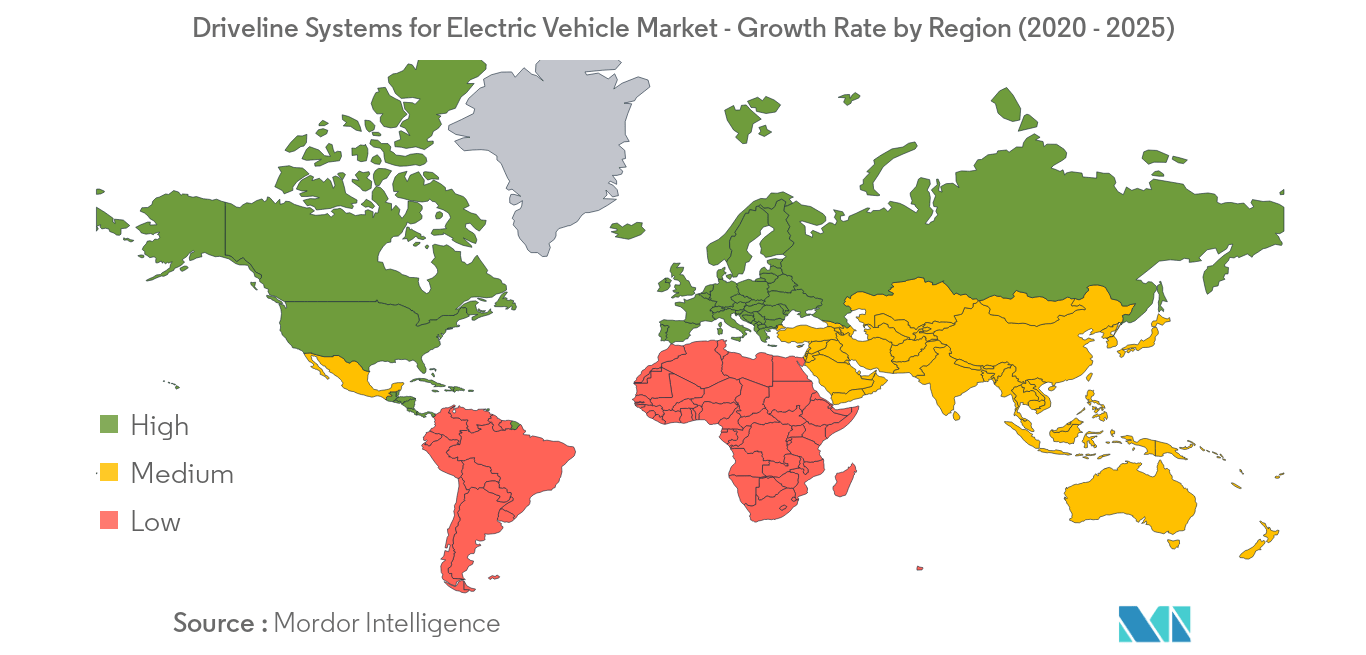Market Trends of Driveline Systems For Electric Vehicle Industry
Driving Demand from Automatic Vehicle Driveline Systems
In the automotive industry, the demand for automatic transmission has been experiencing a positive growth, since 1980. Ease of driving has been a major factor for automatic transmission, which helped to capture a significant market share of more than 30%, in the global automotive transmission system market in 2017.
- The automatic transmission system has been offering various speed ranges. Earlier, automatic transmission was mainly of three-speed, and with the technological advancements in the field, four-speed was introduced and became common during the 1980s. Since 2000s, six-speed and eight-speed automatic transmissions have become popular in the automotive industry.
- In 2017, the automotive industry witnessed numerous launches of 9-speed and 10-speed automatic transmission vehicle models, and is expected to witness a consistent growth in the future, due to the growing competition among automakers to offer improved driveline systems, along with the necessity to adhere to the fuel economy standards set by both governments and automotive organizations.
Among the global regions, North America witnessed the highest market demand for automatic transmission systems.
With the growing focus on fuel efficiency and environmental concerns, automatic transmission manufacturers have been developing and updating the system with high-speed transmission, torque converter with improved mechanical lockup, and neutral idle control features. In order to meet the increasing demand for automatic transmission system in the future, major manufacturers have started expanding their AT production capacity.
- For instance, in 2018, Aisin AI Co. Ltd, a subsidiary of Aisin Seiki Co. Ltd, formulated plans to expand its Kira Plant to produce and complete the assembly of AT units, along with its earlier MT production. The company plans to invest about USD 102 million for the plant expansion and the production of eight-speed automatic transmission units, and is expected to start functioning by November 2019 with 400,000 units per year. Also, the company is planning to reach the manufacturing capacity of AT to 13.2 million units in 2020.

Increasing Electric Car Sales in the APAC and Europe Driving the Market
The electric vehicles market has witnessed a healthy growth in the recent years, in terms of the number of vehicles sold, which was 890,470 in 2012, and reached ~ 2.1 million units in 2018. This spike in sales is attributable to the regulatory norms imposed by various organizations and governments to control emission levels and propagate zero-emission vehicles.
This has forced automakers to increase their expenditure on R&D of electric vehicles, which eventually allowed them to market electric vehicles as the future. This strategy had a strong impact on people, as there was a considerable change in the purchase pattern from conventional IC engine vehicles to electric vehicles. The change has not decreased the sales of IC engine vehicles, but rather created a promising market for electric vehicles in the present, as well as for the future.
Governments across the world have initiated various schemes and initiatives, which encourage a buyer to choose electric vehicles over conventional vehicles. California ZEV program, which aims at having 1.5 million electric vehicles on road by 2025, is one such initiative that promotes the purchase of electric vehicles. Countries, like India, China, United Kingdom, Korea, France, Germany, Norway, Netherlands, etc., are other such countries that have various incentives for people willing to buy an electric vehicle.
The growth of electric vehicles is anticipated to increase the demand for driveline systems.



